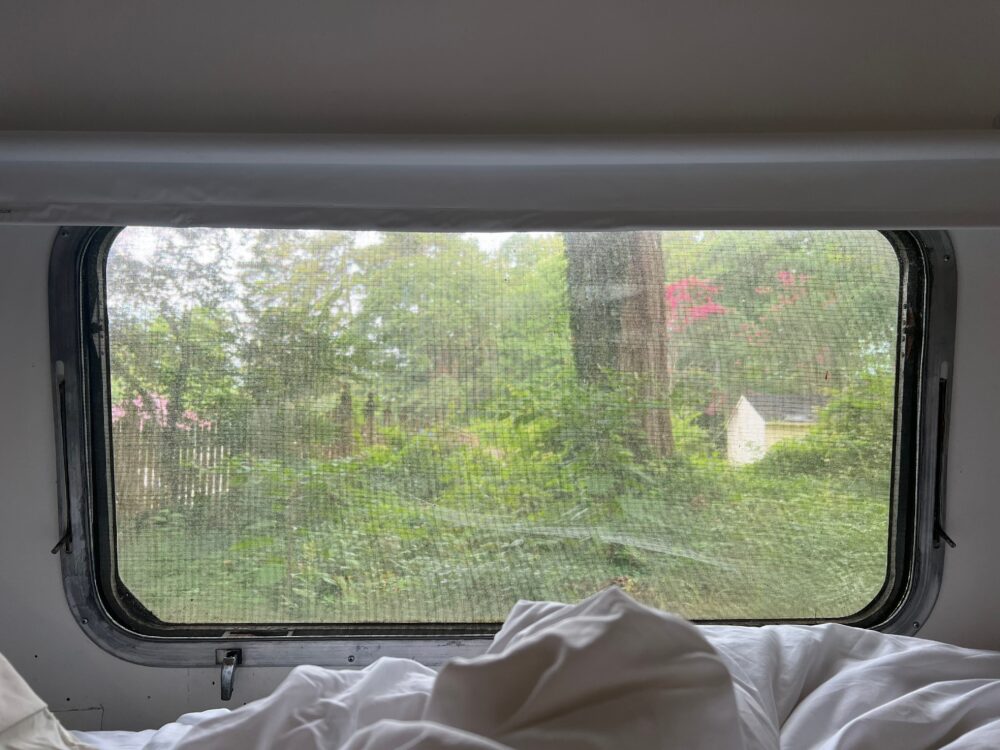
How To Keep Your RV Air Fresh & Prevent Condensation
RV travel embodies the spirit of adventure and freedom. However, proper ventilation is essential to maintain comfort and prevent issues like mold, mildew, and condensation. Ensuring fresh air flow while preventing excess moisture can be a challenge, but with these RV ventilation hacks, you can travel in comfort and confidence.
Why is ventilation important?
Ventilation is crucial for several reasons:
- Fresh RV air flow: Maintaining good air quality is essential for health, especially in the confined space of an RV.
- Moisture control: Activities like cooking and showering can introduce moisture, leading to condensation. Prolonged exposure can result in mold or mildew.
- Temperature regulation: Proper ventilation can help regulate temperature, ensuring a comfortable environment.
Natural ventilation techniques
Maximize the benefits of Mother Nature with these simple methods:
- Strategic window opening: Open windows on opposite sides to create cross-ventilation. This technique draws in fresh air and expels stale air.
- Roof vents: These can act as exhausts for hot air, which naturally rises. Ensure they are kept clean and free from obstructions.
- Shade parking: Whenever possible, park in the shade to reduce the need for air conditioning and encourage natural air flow.
Preventing condensation
Moisture buildup can be a real issue, especially in colder weather. Here’s how to tackle it:
- Cooking: Always turn on the exhaust fan when cooking. If your RV doesn’t have one, consider opening a nearby window.
- Showering: Post-shower, ensure the bathroom is adequately ventilated. Leaving the door open afterwards can also help dissipate moisture.
- Use a dehumidifier: Compact RV dehumidifiers can significantly reduce moisture levels, preventing condensation.
- Insulate your RV: Proper insulation can reduce the chances of condensation, especially on windows.
Advanced ventilation solutions
For those seeking more consistent solutions:
- Install a ceiling fan: This can help circulate air efficiently, especially during hot weather.
- Upgrade roof vents: Consider adding powered roof vents, which can move air more effectively than passive vents.
- Window vents or rain guards: These allow you to keep windows slightly open for air flow even when it’s raining outside.
Combating excess heat
Keeping cool is often the primary focus, especially during summer travels:
- Reflective window covers: These can deflect sunlight and keep the interior cooler, reducing the need for continuous air conditioning.
- Portable fans: Strategically placing portable fans can aid in circulating air and ensuring consistent cooling.
- Ventilated bed solutions: Consider mattresses or mattress toppers designed for airflow, preventing heat buildup during sleep.
Considerations for winter travel
Cold weather poses its unique challenges:
- Roof vent insulators: These can prevent heat from escaping while keeping cold air out.
- Window insulation kits: These kits add an extra layer to windows, reducing heat loss and preventing cold drafts.
- Foot vents: Placing vents near the floor can help draw in fresh, cool air, pushing warmer, stale air upwards and out.
Keeping safety in mind
While promoting airflow, keep these safety tips in mind:
- Gas safety: Ensure proper ventilation if using gas heaters. Regularly inspect for gas leaks.
- Smoke and carbon monoxide detectors: Always keep these devices in working order, regularly checking their batteries and functionality.
- Never block exits: When employing ventilation methods, ensure that emergency exits remain clear and accessible.
Conclusion
Balancing ventilation with the prevention of condensation can seem challenging, but with the right hacks and techniques, you can enjoy a comfortable RV experience. Fresh air and a moisture-free environment not only ensure comfort but also prolong the life of your RV, making sure your adventures continue for years to come.
Get tips from other RVers
One of the best parts about RVing is engaging with the community of traveling enthusiasts. iRV2 forums allow folks to chat with other RVers online, and get other perspectives on everything RVing, including products, destinations, RV mods, and more.



